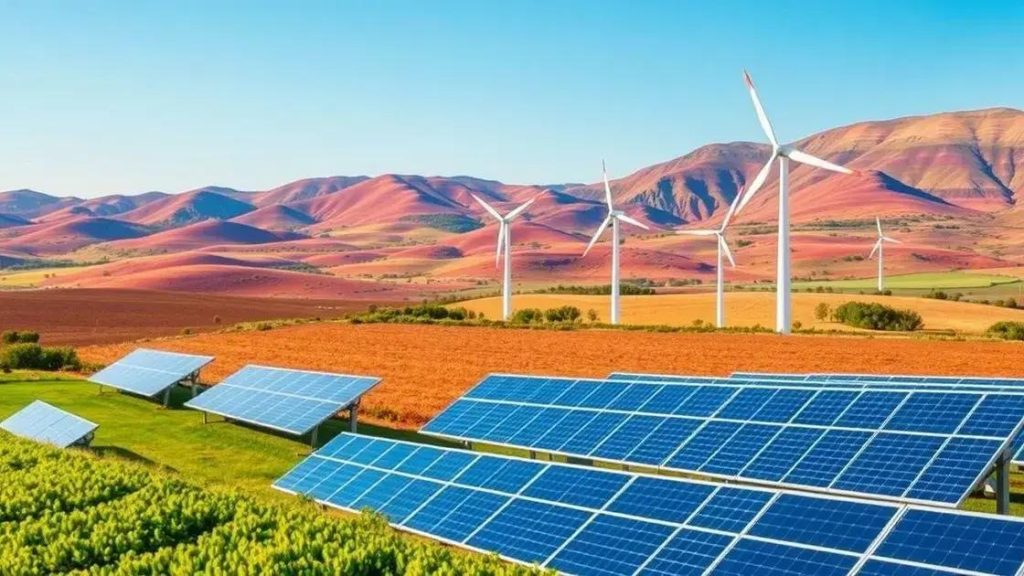Green energy incentive stories: how they transform lives

Green energy incentives are financial benefits provided by governments, such as tax credits and rebates, designed to promote the adoption of renewable energy sources, boosting sustainability and creating jobs in communities.
Green energy incentive stories reveal the inspiring ways incentives are motivating individuals and communities to adopt sustainable practices. Have you ever wondered how these programs change lives? Let’s dive into some remarkable examples.
Understanding green energy incentives
When we talk about green energy incentives, we refer to programs designed to encourage the adoption of renewable energy sources. Understanding these incentives is essential for both consumers and businesses aiming to reduce their carbon footprint. These programs not only promote sustainability but also offer financial benefits, making it easier for individuals to transition to greener energy solutions.
Types of Green Energy Incentives
There are several types of incentives available. These can significantly lower the cost of switching to renewable energy. For example:
- Tax credits: These reduce the amount you owe in taxes when you invest in renewable energy.
- Rebates: Some programs offer direct payments to offset the cost of renewable energy installations.
- Grants: These are funds provided for specific renewable energy projects, requiring no repayment.
Many states and local governments are also getting involved by offering additional support. This collaboration ensures that a wider range of incentives is available for residents.
The Impact of Incentives
The impact of green energy incentives cannot be overstated. They play a critical role in encouraging homeowners and businesses to invest in renewable technologies. For instance, when financial barriers are removed, more people are willing to install solar panels or geothermal heating. This shift not only benefits the environment but can also lead to significant savings on energy bills.
Furthermore, these incentives often spur job creation in the renewable energy sector. As demand increases, so does the need for skilled labor, leading to new work opportunities. By embracing green energy incentives, we are investing in a sustainable future, both environmentally and economically.
Real-life success stories of green energy
Real-life success stories of green energy demonstrate how individuals and communities have embraced renewable energy sources. These stories highlight not only the benefits but also the transformative effects that come with switching to sustainable energy solutions.
A Family’s Solar Journey
One impactful example is a family that decided to install solar panels on their home. Initially motivated by high electricity bills, they researched available incentives. After applying for a state rebate and a federal tax credit, they significantly reduced their installation costs.
Once installed, the solar panels decreased their monthly energy expenses by over 50%. Additionally, they were able to sell excess energy back to the grid, earning extra income. This family’s experience shows the powerful impact of green energy incentives on personal finances.
Community Solar Projects
Another inspiring story is that of a small town that launched a community solar project. This initiative invited residents to invest collectively in solar energy. Many local families who could not install solar panels on their roofs still benefited from renewable energy.
- Increased local job opportunities in installation and maintenance.
- Strengthened community ties through collective investment.
- Reduced overall carbon emissions significantly.
These community projects exemplify how green energy can foster collaboration and offer financial advantages while contributing to environmental goals.
Another notable success story involves a school district that embraced renewable energy. By installing wind turbines and solar panels on school grounds, they significantly lowered energy costs. These savings were reinvested into educational programs, enhancing students’ learning experiences and promoting sustainability awareness among youth.
How to access green energy incentives

Accessing green energy incentives can seem complex, but understanding the steps can make it easier. Knowing where to start is key to benefiting from these programs. Many incentives are available at the federal, state, and local levels, each designed to encourage the use of renewable energy sources.
Research Available Incentives
The first step is to research which incentives apply to your situation. You can begin by visiting government websites that list available programs. Resources like the Database of State Incentives for Renewables and Efficiency (DSIRE) provide a comprehensive overview of programs by state.
Make sure to look for:
- Tax credits that can reduce your tax liability.
- Rebates that offer direct financial support after you purchase a renewable energy system.
- Grants that provide funds for projects without requiring repayment.
Understand Eligibility Requirements
Each program has unique eligibility requirements. It’s vital to understand these stipulations to ensure you qualify. Some programs may require specific equipment, while others might have income limits.
In some cases, you may need to demonstrate proof of purchase or installation. Keeping thorough records can help streamline this process later. Finding a local installer familiar with green energy incentives can also provide valuable guidance.
Applying for these incentives could involve filling out forms or submitting applications through designated websites. This step is where detailed information about your project will be necessary. Whether installing solar panels or wind turbines, providing exact details can facilitate approval.
Impact of green energy on community development
The impact of green energy on community development is profound. When communities invest in renewable energy, they are not just addressing environmental concerns; they are also enhancing their social and economic well-being. From creating jobs to fostering community engagement, the benefits are far-reaching.
Job Creation and Economic Growth
One of the most significant impacts of green energy is job creation. The transition to renewable energy sources, such as solar and wind power, generates numerous employment opportunities. Local economies benefit as more workers are hired for:
- Installation of solar panels and wind turbines.
- Maintenance and repair of renewable energy systems.
- Manufacturing of energy-efficient products.
This influx of jobs stimulates local economies and can reduce unemployment rates, laying the groundwork for sustainable growth. As local residents find work in green energy sectors, their increased earnings lead to higher spending within the community.
Community Engagement and Education
Green energy initiatives often encourage community involvement. Local projects bring people together, fostering collaboration and a sense of belonging. Community workshops and informational sessions about renewable energy can educate residents about sustainability practices. This knowledge empowers individuals to make informed choices and adopt green technologies in their own homes.
Schools and non-profits may also participate in promoting awareness of renewable energy. By integrating green energy topics into educational curriculums, communities inspire younger generations to think critically about energy use. This approach creates a culture that values sustainability, resulting in more environmentally-conscious behaviors.
As communities embrace green energy, they begin to see improvements in public health too. Reduced pollution from fossil fuels leads to cleaner air and water, ultimately benefiting everyone’s quality of life. This transition can result in fewer health problems related to air quality, benefiting both individual and community well-being.
Future trends in green energy incentives
The future of green energy incentives is bright and full of potential for innovation. As technology advances, more people and organizations are taking steps toward sustainability. Understanding upcoming trends can help individuals and businesses maximize their benefits.
Increased Government Support
One major trend is the expected increase in government support for renewable energy initiatives. As public awareness grows regarding climate change, there’s a push for stronger policy measures. Governments are likely to implement more substantial incentives and rebates to encourage the transition to green energy sources.
Some expected changes include:
- Higher tax credits and deductions for renewable energy installations.
- Expanded eligibility for incentives, allowing more households and businesses to participate.
- New programs targeting low-income communities to ensure equitable access to renewable energy.
Technological Advancements
Another significant trend involves technological advancements in renewable energy. Innovations in solar panels, wind turbines, and battery storage systems make them more efficient and affordable. As these technologies improve, incentives will likely evolve alongside them. This adjustment might inspire new programs that integrate cutting-edge technologies.
For instance, the rise of smart home technologies allows for better energy management. Programs promoting energy-efficient appliances and smart meters could gain popularity, giving consumers more control over their energy use.
Moreover, advancements in energy storage solutions will enable households to store excess solar energy for later use. This capability makes renewable energy more reliable, encouraging more people to adopt these technologies.
In conclusion, embracing green energy incentives can lead to a sustainable future for individuals and communities alike. These programs not only reduce environmental impact but also provide financial benefits and job opportunities. As technology advances and government support grows, more people will gain access to renewable energy solutions. By understanding and leveraging these incentives, we can work together to build a cleaner, healthier planet for future generations.
FAQ – Frequently Asked Questions about Green Energy Incentives
What are green energy incentives?
Green energy incentives are financial benefits or subsidies provided by governments to encourage the use of renewable energy sources, such as solar and wind power.
How can I access these incentives?
You can access green energy incentives by researching available programs through government websites and understanding the eligibility requirements for each.
What types of incentives are commonly available?
Common types of incentives include tax credits, rebates, and grants that help lower the overall cost of installing renewable energy systems.
How do green energy projects impact my community?
Green energy projects can boost local economies through job creation, improve environmental health by reducing pollution, and foster community engagement through sustainability efforts.





